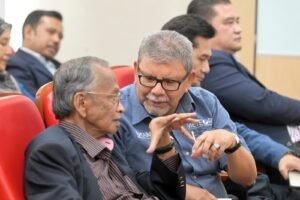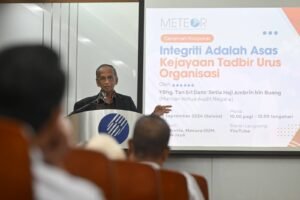The High-Stakes Battle

In a case that electrified the courtroom, a prominent utility company faced an additional tax assessment of RM1.8 billion for the Year of Assessment (YA) 2018. The issue at hand? Whether the company’s activities in generating, transmitting, distributing, and selling electricity qualified for a Reinvestment Allowance (RA) under Schedule 7A of the Income Tax Act (ITA) 1967, or if they fell under the Investment Allowance (IA) scheme in Schedule 7B.
The stakes were monumental. At the heart of the dispute was the interpretation of what constituted “manufacturing” versus “service.” The tax authorities argued vehemently that the utility company’s activities did not fit the definition of manufacturing and, therefore, could not claim RA under Schedule 7A. Instead, they contended, the company belonged squarely in the service sector, making it eligible only for IA under Schedule 7B—a scheme introduced specifically for such projects in 1996.
The Arguments Unfold

“This is not manufacturing,” the Director General of Inland Revenue (DGIR)’s representative argued. “Schedule 7B was created precisely for entities like this one, operating in the utility service sector. Parliament’s intention was clear.”
The utility company’s counsel, however, had a different interpretation. “Your Honours, the company has been claiming RA under Schedule 7A since 2004, without issue. The law as it stands does not exclude their activities from being classified as manufacturing for this purpose.”
A Landmark Judgment

The High Court had ruled in favor of the taxpayer, a decision the DGIR quickly appealed. The DGIR argued that the court had acted beyond its jurisdiction and that there was no flaw in the assessment process.
The Court of Appeal, however, saw it differently. After thorough deliberation, the judges unanimously dismissed the DGIR’s appeal. “The taxpayer’s activities fall under the definition of a qualifying project within Paragraph 8(a), Schedule 7A of the ITA,” the lead judge announced.
The court noted that the company’s claims for RA were consistent with their operations since YA 2004 and that the DGIR’s attempt to shift the framework to IA under Schedule 7B lacked sufficient justification. The appeal was dismissed, with no order as to costs.
The Lesson Learned

This case underscores a vital lesson in tax law: consistency and clarity in legislative interpretation are paramount.
For taxpayers, this decision highlights the importance of aligning claims with statutory provisions and defending long-standing practices with well-documented evidence. For tax authorities, the case reinforces the need to base assessments on clear statutory definitions and avoid reinterpreting laws in ways that disrupt established practices.
Ultimately, the case reminds us all that in taxation, as in business, understanding the nuances of legal frameworks is as critical as the operations themselves. This resolution not only brought clarity to the taxpayer but also set a precedent for future disputes in distinguishing manufacturing from service-based activities.
Aturan 53 Kaedah-Kaedah Mahkamah 2012, Jadual 7A dan Jadual 7B Akta Cukai Pendapatan 1967






